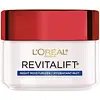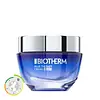What's inside
What's inside
 Key Ingredients
Key Ingredients

 Benefits
Benefits

 Concerns
Concerns

 Ingredients Side-by-side
Ingredients Side-by-side

Water
Skin ConditioningGlycerin
HumectantDimethicone
EmollientHydrogenated Polyisobutene
EmollientCetyl Alcohol
EmollientGlyceryl Stearate
EmollientAluminum Starch Octenylsuccinate
AbsorbentPEG-40 Stearate
EmulsifyingPrunus Armeniaca Kernel Oil
MaskingShorea Robusta Seed Butter
EmollientParaffinum Liquidum
EmollientParaffin
PerfumingZea Mays Kernel Extract
Stearic Acid
CleansingStearyl Alcohol
EmollientCera Microcristallina
Emulsion StabilisingSorbitan Tristearate
EmulsifyingGlycine Soja Protein
EmulsifyingTriethanolamine
BufferingIsohexadecane
EmollientSalicyloyl Phytosphingosine
Skin ConditioningMyristyl Alcohol
EmollientPalmitic Acid
EmollientPhenethyl Alcohol
MaskingHydrolyzed Soy Protein
HumectantCaprylyl Glycol
EmollientAcetyl Trifluoromethylphenyl Valylglycine
Skin ConditioningFaex Extract
Skin ConditioningPolysorbate 80
EmulsifyingAcrylamide/Sodium Acryloyldimethyltaurate Copolymer
Emulsion StabilisingRetinyl Palmitate
Skin ConditioningPotassium Sorbate
PreservativeSodium Benzoate
MaskingPhenoxyethanol
PreservativeLinalool
PerfumingGeraniol
PerfumingAlpha-Isomethyl Ionone
PerfumingAmyl Cinnamal
PerfumingLimonene
PerfumingCitral
PerfumingCitronellol
PerfumingButylphenyl Methylpropional
PerfumingHexyl Cinnamal
PerfumingBenzyl Alcohol
PerfumingBenzyl Benzoate
AntimicrobialBenzyl Cinnamate
PerfumingBenzyl Salicylate
PerfumingParfum
MaskingWater, Glycerin, Dimethicone, Hydrogenated Polyisobutene, Cetyl Alcohol, Glyceryl Stearate, Aluminum Starch Octenylsuccinate, PEG-40 Stearate, Prunus Armeniaca Kernel Oil, Shorea Robusta Seed Butter, Paraffinum Liquidum, Paraffin, Zea Mays Kernel Extract, Stearic Acid, Stearyl Alcohol, Cera Microcristallina, Sorbitan Tristearate, Glycine Soja Protein, Triethanolamine, Isohexadecane, Salicyloyl Phytosphingosine, Myristyl Alcohol, Palmitic Acid, Phenethyl Alcohol, Hydrolyzed Soy Protein, Caprylyl Glycol, Acetyl Trifluoromethylphenyl Valylglycine, Faex Extract, Polysorbate 80, Acrylamide/Sodium Acryloyldimethyltaurate Copolymer, Retinyl Palmitate, Potassium Sorbate, Sodium Benzoate, Phenoxyethanol, Linalool, Geraniol, Alpha-Isomethyl Ionone, Amyl Cinnamal, Limonene, Citral, Citronellol, Butylphenyl Methylpropional, Hexyl Cinnamal, Benzyl Alcohol, Benzyl Benzoate, Benzyl Cinnamate, Benzyl Salicylate, Parfum
Water
Skin ConditioningHydrogenated Polyisobutene
EmollientGlycerin
HumectantButylene Glycol
HumectantDimethicone
EmollientCetyl Alcohol
EmollientGlyceryl Stearate
EmollientZea Mays Starch
AbsorbentElaeis Guineensis Oil
EmollientParaffinum Liquidum
EmollientPEG-100 Stearate
Cera Alba
EmollientSorbitol
HumectantMyristyl Myristate
EmollientZea Mays Oil
EmulsifyingPEG-14m
Emulsion StabilisingCera Microcristallina
Emulsion StabilisingParaffin
PerfumingAlgae
Skin ConditioningSorbitan Tristearate
EmulsifyingGlyceryl Acrylate/Acrylic Acid Copolymer
HumectantDimethyl Isosorbide
SolventIsohexadecane
EmollientLaminaria Ochroleuca Extract
Skin ConditioningSodium Hydroxide
BufferingMoringa Oleifera Seed Extract
Skin Conditioning2-Oleamido-1,3-Octadecanediol
Skin ConditioningPhenoxyethanol
PreservativePrunus Armeniaca Kernel Oil
MaskingAdenosine
Skin ConditioningChlorphenesin
AntimicrobialDisodium EDTA
Propylene Glycol
HumectantHydroxypropyl Tetrahydropyrantriol
Skin ConditioningCapryloyl Salicylic Acid
ExfoliatingVitreoscilla Ferment
Skin ConditioningPassiflora Edulis Seed Oil
EmollientXanthan Gum
EmulsifyingMaltitol
HumectantPentaerythrityl Tetra-Di-T-Butyl Hydroxyhydrocinnamate
AntioxidantOctyldodecanol
EmollientAcrylamide/Sodium Acryloyldimethyltaurate Copolymer
Emulsion StabilisingPolysorbate 80
EmulsifyingOryza Sativa Bran Oil
EmollientParfum
MaskingWater, Hydrogenated Polyisobutene, Glycerin, Butylene Glycol, Dimethicone, Cetyl Alcohol, Glyceryl Stearate, Zea Mays Starch, Elaeis Guineensis Oil, Paraffinum Liquidum, PEG-100 Stearate, Cera Alba, Sorbitol, Myristyl Myristate, Zea Mays Oil, PEG-14m, Cera Microcristallina, Paraffin, Algae, Sorbitan Tristearate, Glyceryl Acrylate/Acrylic Acid Copolymer, Dimethyl Isosorbide, Isohexadecane, Laminaria Ochroleuca Extract, Sodium Hydroxide, Moringa Oleifera Seed Extract, 2-Oleamido-1,3-Octadecanediol, Phenoxyethanol, Prunus Armeniaca Kernel Oil, Adenosine, Chlorphenesin, Disodium EDTA, Propylene Glycol, Hydroxypropyl Tetrahydropyrantriol, Capryloyl Salicylic Acid, Vitreoscilla Ferment, Passiflora Edulis Seed Oil, Xanthan Gum, Maltitol, Pentaerythrityl Tetra-Di-T-Butyl Hydroxyhydrocinnamate, Octyldodecanol, Acrylamide/Sodium Acryloyldimethyltaurate Copolymer, Polysorbate 80, Oryza Sativa Bran Oil, Parfum
Ingredients Explained
These ingredients are found in both products.
Ingredients higher up in an ingredient list are typically present in a larger amount.
We don't have a description for Acrylamide/Sodium Acryloyldimethyltaurate Copolymer yet.
Cera Microcristallina isn't fungal acne safe.
Cetyl Alcohol is a fatty alcohol. Fatty Alcohols are most often used as an emollient or to thicken a product.
Its main roles are:
Though it has "alcohol" in the name, it is not related to denatured alcohol or ethyl alcohol.
The FDA allows products labeled "alcohol-free" to have fatty alcohols.
Learn more about Cetyl AlcoholDimethicone is a type of synthetic silicone created from natural materials such as quartz.
What it does:
Dimethicone comes in different viscosities:
Depending on the viscosity, dimethicone has different properties.
Ingredients lists don't always show which type is used, so we recommend reaching out to the brand if you have questions about the viscosity.
This ingredient is unlikely to cause irritation because it does not get absorbed into skin. However, people with silicone allergies should be careful about using this ingredient.
Note: Dimethicone may contribute to pilling. This is because it is not oil or water soluble, so pilling may occur when layered with products. When mixed with heavy oils in a formula, the outcome is also quite greasy.
Learn more about DimethiconeGlycerin is already naturally found in your skin. It helps moisturize and protect your skin.
A study from 2016 found glycerin to be more effective as a humectant than AHAs and hyaluronic acid.
As a humectant, it helps the skin stay hydrated by pulling moisture to your skin. The low molecular weight of glycerin allows it to pull moisture into the deeper layers of your skin.
Hydrated skin improves your skin barrier; Your skin barrier helps protect against irritants and bacteria.
Glycerin has also been found to have antimicrobial and antiviral properties. Due to these properties, glycerin is often used in wound and burn treatments.
In cosmetics, glycerin is usually derived from plants such as soybean or palm. However, it can also be sourced from animals, such as tallow or animal fat.
This ingredient is organic, colorless, odorless, and non-toxic.
Glycerin is the name for this ingredient in American English. British English uses Glycerol/Glycerine.
Learn more about GlycerinGlyceryl Stearate is a mix of glycerin and stearic acid.
It is used to stabilize the mixing of water and oil ingredients. By preventing these ingredients from separating, it can help elongate shelf life. It can also help thicken the product's texture.
As an emollient, it helps soften skin and supports barrier-replenishing ingredients.
In cosmetics, Glyceryl Stearate is often made from vegetable oils or synthetically produced.
This ingredient may not be fungal-acne safe
Fun fact: The human body also creates Glyceryl Stearate naturally.
Learn more about Glyceryl StearateHydrogenated Polyisobutene is a synthetic polymer. Polymers are compounds with high molecular weight. Hydrogenated Polyisobutene is an emollient and texture enhancer.
In one study, Hydrogenated Polyisobutene showed better skin hydration levels than Caprylic/Capric Triglyceride. As an emollient, it helps keep your skin soft and hydrated by trapping moisture in.
Hydrogenated Polyisobutene is often used as a mineral oil replacement.
Learn more about Hydrogenated PolyisobuteneIsohexadecane is added to enhance texture, emulsify, and to help cleanse. It is an isoparrafin. It is a component of petrolatum.
Due to its large size, Isohexadecane is not absorbed by the skin. Instead, it sits on top and acts as an emollient. Emollients help keep your skin soft and smooth by trapping moisture within.
Isohexadecane is often used in products designed to help oily skin. It is lightweight and non-greasy while helping to moisturize. When mixed with silicones, it gives a product a silky feel.
Learn more about IsohexadecaneParaffin is a solid created from petroleum. The term 'paraffin' can also refer to either
petroleum jelly or mineral oil.
It has natural occlusive properties which can worsen oily skin. Due to its petrolatum base, this ingredient is not fungal-acne safe.
Paraffinum Liquidum is also known as liquid paraffin. It is a type of highly refined mineral oil.
Like other oils, Paraffinum Liquidum has emollient properties. Emollients help soothe and soften the skin. By creating a barrier to trap moisture within, emollients help keep your skin hydrated.
Paraffinum Liquidum does not irritate the skin and is non-comedogenic.
Learn more about Paraffinum LiquidumParfum is a catch-all term for an ingredient or more that is used to give a scent to products.
Also called "fragrance", this ingredient can be a blend of hundreds of chemicals or plant oils. This means every product with "fragrance" or "parfum" in the ingredients list is a different mixture.
For instance, Habanolide is a proprietary trade name for a specific aroma chemical. When used as a fragrance ingredient in cosmetics, most aroma chemicals fall under the broad labeling category of “FRAGRANCE” or “PARFUM” according to EU and US regulations.
The term 'parfum' or 'fragrance' is not regulated in many countries. In many cases, it is up to the brand to define this term.
For instance, many brands choose to label themselves as "fragrance-free" because they are not using synthetic fragrances. However, their products may still contain ingredients such as essential oils that are considered a fragrance by INCI standards.
One example is Calendula flower extract. Calendula is an essential oil that still imparts a scent or 'fragrance'.
Depending on the blend, the ingredients in the mixture can cause allergies and sensitivities on the skin. Some ingredients that are known EU allergens include linalool and citronellol.
Parfum can also be used to mask or cover an unpleasant scent.
The bottom line is: not all fragrances/parfum/ingredients are created equally. If you are worried about fragrances, we recommend taking a closer look at an ingredient. And of course, we always recommend speaking with a professional.
Learn more about ParfumPhenoxyethanol is a preservative that has germicide, antimicrobial, and aromatic properties. Studies show that phenoxyethanol can prevent microbial growth. By itself, it has a scent that is similar to that of a rose.
It's often used in formulations along with Caprylyl Glycol to preserve the shelf life of products.
Polysorbate 80 is a surfactant and emulsifier. It is used to keep ingredients together, and prevent oils and waters from separating.
It is made from polyethoxylated sorbitan and oleic acid. This ingredient can be found in cosmetics, foods, and medicine. It is water-soluble.
Polysorbate 80 may not be fungal acne safe.
Learn more about Polysorbate 80This ingredient is the oil from the apricot.
Apricot Kernel Oil is an emollient and helps soften skin. This is due to its fatty acid components. Some of these fatty acids include linoleic and oleic acid.
This ingredient also has antioxidant properties from Vitamins A, C, and E. Antioxidants help fight free-radicals. Free-radicals are molecules that may damage your skin cells. Besides being antioxidants, these vitamins provide plenty of skin benefits as well.
Learn more about Prunus Armeniaca Kernel OilWe don't have a description for Sorbitan Tristearate yet.
Water. It's the most common cosmetic ingredient of all. You'll usually see it at the top of ingredient lists, meaning that it makes up the largest part of the product.
So why is it so popular? Water most often acts as a solvent - this means that it helps dissolve other ingredients into the formulation.
You'll also recognize water as that liquid we all need to stay alive. If you see this, drink a glass of water. Stay hydrated!
Learn more about Water